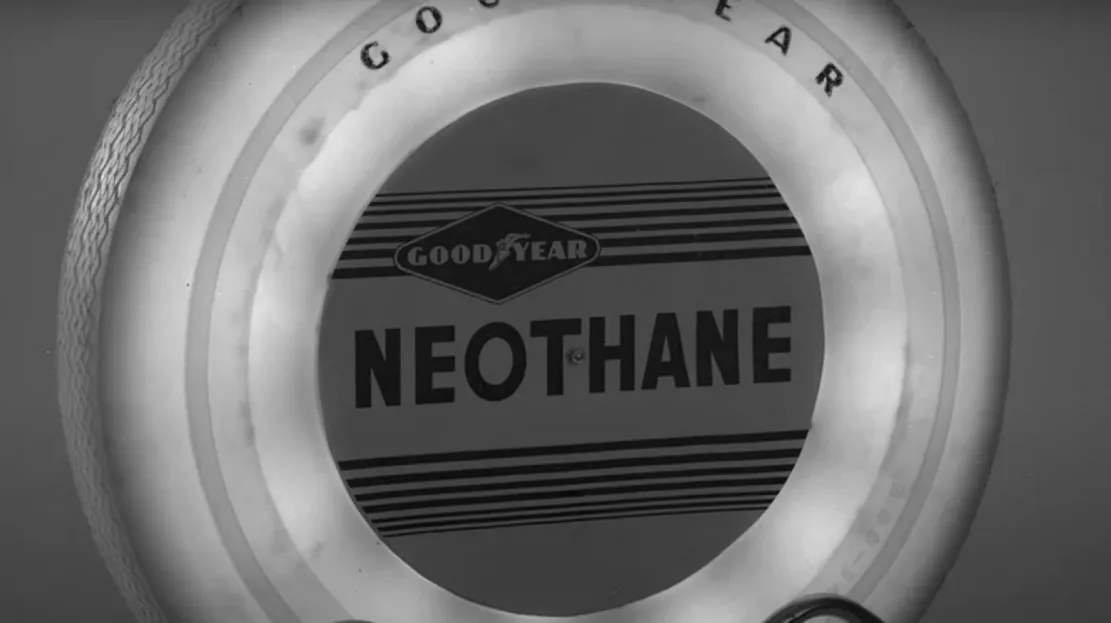Car enthusiasts often modify their cars in every possible way, from the hydraulic system of low-speed cars to the blower of hot cars. They cut off the roof, installed spoilers, illuminated the underbody with neon lights, and decorated their mounts with large tires, small tires, white walls and sliding tires. You might think that a company could use people's insatiable desires to decorate their mounts by making shiny tires.
In fact, Goodyear tire and rubber did it -- and did it as early as 1961.
According to the drive, chemist William Larson and colleague Anthony finelli working at Goodyear have created a translucent polyurethane material called neothane, which is designed to withstand baking in an oven at 250 ° f after being poured into a tire shaped mold. This made it much easier to make neoprene tires than traditional tires, and led Goodyear to even claim that this synthetic material was better than traditional rubber. However, it turned out that this situation did not last long - although the translucent appearance made it possible to make luminous tires, the final product was easy to melt during driving.
Goodyear wants to light up the night
With neothane, Goodyear will revolutionize the tire industry. This material will make it easier for them to make tyres. In addition, this new liquid compound has a very marketable advantage. One byproduct of baking this synthetic rubber is that it becomes translucent. That's why Goodyear can dye the tire any color it wants. In fact, the drive quotes John J. Hartz, Goodyear's development manager, as saying in 1962: "one day, a wife may tell her husband, 'Charlie, go out and change the tire. I'm going to wear my blue skirt tonight'."
But Goodyear did not give up. Because neothane is translucent and allows light to pass through, engineers installed a string of 18 bulbs in the center of the wheel. When opened at night, they make the whole tire glow, illuminating the wheel well and the ground under the car. The driver can even control which tires are illuminated through the panel near the steering wheel and allow them to be used as brake lights or even turn signals. This is a fairly big picture, especially in the early 1960s.
Neon tyres were not ready for use in the 1960s

Although early tests showed that neothane tires were smooth and quiet, several problems with these tires quickly emerged. First of all, it does not perform well in wet weather, so it is dangerous to use it in rainy or snowy days. Secondly, the hot weather and serious fracture cause the tire to melt. Neothane cannot be used in hot environments such as Las Vegas. Regular driving will make the tires very dirty, so that they must be cleaned after each trip, otherwise the dirt will make the lighting effect worse.
Last but not least, drivers are so fascinated by bright colors and neon lights that they break through stop signs and traffic lights or brake in the middle of the road and stare. Goodyear was not discouraged and began to make modifications, but they soon found that the cost of new synthetic compounds in tire manufacturing was too high, so the idea of "one of the most eye-catching tire developments in industrial history" came to an abrupt end.